Formation of continents.Take a close look at the animation of two huge, diametrically opposed formations on the surface of the earth’s core. They cannot but be directly related to the formation of continents. They are both biased to the same direction (east). Continents are displaced from them to the east. Compare with the official model for the formation of continents. These huge structures are contrary to the official model of the formation of continents.
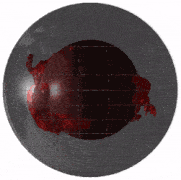
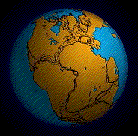 Link to the source article about Earth Blobs: https://eos.org/features/the-unsolved-mystery-of-the-earth-blobs
Link to the source article about Earth Blobs: https://eos.org/features/the-unsolved-mystery-of-the-earth-blobsThe Cordillera – the Andes, the Iranian highlands – the Himalayas – are also two huge formations of a similar shape, also diametrically opposed to each other. Both are displaced to the east of two huge formations of the Earth’s core (HFEC). Cordillera – The Andes are displaced further from their HFEC and are more split. Iranian Highlands – The Himalayas are closer to their HFEC, and are strongly displaced to the north.
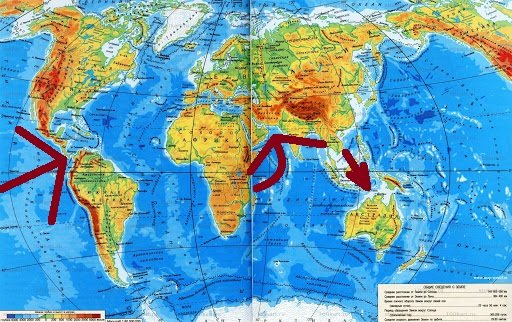 New model of the Universe.
New model of the Universe.From the above, we can conclude that before the moment of the so-called “Big Bang” in the Universe there was a certain material sphere with a diameter of about 20 thousand km, the substance in which was in the stage of the limit of density (the state of singularity). Let’s call this sphere
ProtoEarth.

As a result of certain processes at the Proto-Earth’s poles two
PreContinents were gradually formed –
PreAmerica (North America, South America and Antarctica) and
PreEurasia (Africa, Eurasia and Australia), in the centers of which the Sun and the Moon were gradually formed. Parallel to this, water was formed in a wide strip of the proto-Earth’s equator as a result of certain processes. At a certain moment, a critical mass difference accumulated at the poles, the equilibrium of the system was violated, the separation of the Sun and the Moon began, the proto-Earth’s axis of rotation shifted from conditional zero degrees to the current 23.5 degrees, and the formation of modern continents.
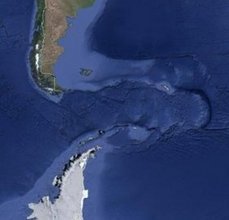
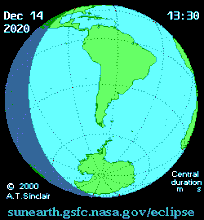
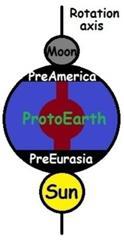 (a huge trail of clearly cosmic origin between South America and Antarctica, animation of the trajectory of a solar eclipse shadow and a schematic drawing)A few more arguments in favor of this model of the Universe:-
(a huge trail of clearly cosmic origin between South America and Antarctica, animation of the trajectory of a solar eclipse shadow and a schematic drawing)A few more arguments in favor of this model of the Universe:- The coincidence of the apparent diameters of the Sun and the Moon in the sky.
- The coincidence of the axial periods of rotation of the Sun and the Moon (27 days).
- Only Mercury and Venus have no satellites.
- Only Mercury and Venus have incommensurably large periods of rotation around their axes 58 and 243 days, respectively (Earth, Mars – 1 day; Jupiter, Saturn – 16, 17 hours; Uranus, Neptune – 9, 10 hours).
- In each lower conjunction (that is, during the closest approach to the Earth) Venus is facing the Earth by the same side.
 (schematic comparison of the official and new model of the Universe; ProtoEarth, Moon, Sun, Venus, Mercury, Mars and common center of masses between Earth and Sun)
(schematic comparison of the official and new model of the Universe; ProtoEarth, Moon, Sun, Venus, Mercury, Mars and common center of masses between Earth and Sun)Thus, it is very similar to the fact that the Universe looks approximately like on the Tycho Brahe's model of the Universe, only with the correction for the rotation of the Earth and the Sun around the common center of mass. The Oort cloud is the border of the Universe, where all the “stars” and “galaxies” formed from the proto-Earth mantle, with diameters not exceeding several tens of kilometers, are located. The diameter of the universe, presumably, does not exceed one light minute.
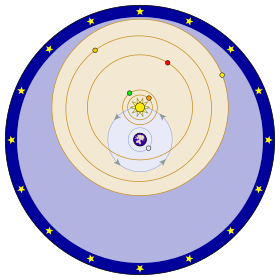
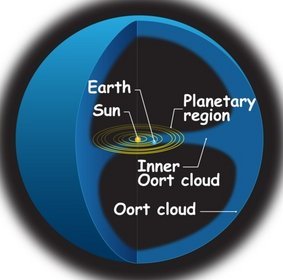
In all this, a correct understanding of the rotation of the Earth and the Sun around a common center of mass is very important. The ratio of diameters is approximately the same as in the animation (the Earth is larger, the Sun is smaller).
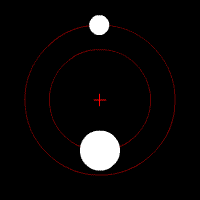 Addition.
Addition.The rotation of Venus around the Sun is very similar to the rotation of the Moon around the Earth, except for the direction of rotation. That is, Venus is not always facing the Sun with one side, but
in each lower conjunction (that is, during the closest approach to the Earth) Venus is facing the Earth by the same side. As you can see from the quote above, in the official model of the solar system there is no explanation for such an orbital phenomenon of Venus, because it can in no way be a coincidence or the result of the tidal interaction of the Earth and Venus (at least with the official parameters of the solar system).
The paradox here most likely lies in the misunderstanding of the reference point (coordinate system). When calculating the orbital rotation period of the planet (in this case, Venus), the immobility of the Sun and the rotation of the Earth around it are taken into account, and therefore the paradox of the mismatch of the orbital and axial rotation periods of Venus (225 and 243 days) and the fact that “in each lower conjunction (that is, during the closest approach to the Earth) Venus faces the Earth with the same side.”
The answer to this paradox, most likely,
is that it is not the Earth that revolves around the Sun, but the Earth and the Sun revolve around a common center of mass, and then the officially paradoxical coincidence of the orbital and axial periods of Venus’s rotation becomes quite natural. But since the convergence of the Earth and Venus occurs approximately once every one and a half years,
the orbital period of Venus is 584 days (the synodic period of Venus)
, and the axial period relative to the Earth is 146 days (that is, exactly four times less)
. This is difficult for a spatial representation (especially considering the massive brainwashing with the official model of the solar system)
, but when the Earth and the Sun rotate around a common center of mass, this is quite possible, does not contradict visual observations of the movement of the planets and the Sun in the sky, and most importantly, this explains the fact that in each lower conjunction (that is, during the closest approach to the Earth) Venus is facing the Earth by the same side.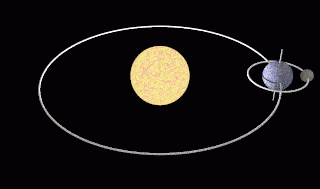
 Two animations for better spatial presentation. On the second – the rotation of the Earth and the Sun around the common center of mass (the Earth is larger, the Sun is smaller).
Two animations for better spatial presentation. On the second – the rotation of the Earth and the Sun around the common center of mass (the Earth is larger, the Sun is smaller).